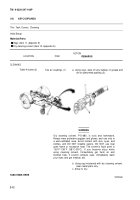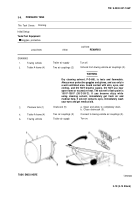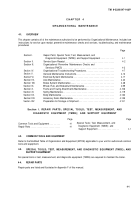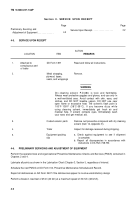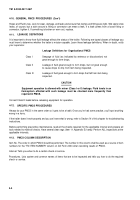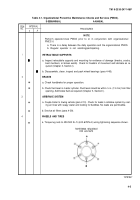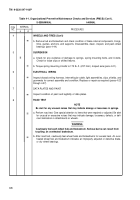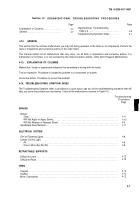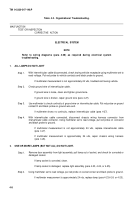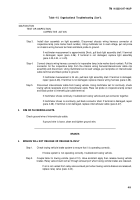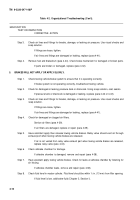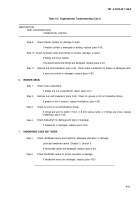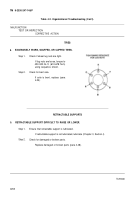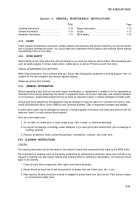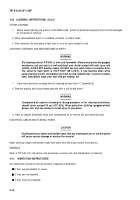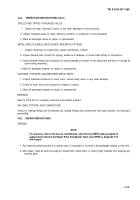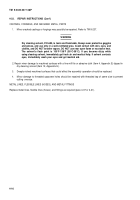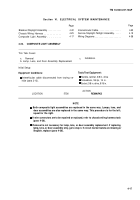TM-9-2330-247-14-P - Page 62 of 320
TM 9-2330-247-14&P
Table 4-2. Organizational Troubleshootlng.
MALFUNCTION
TEST OR INSPECTION
CORRECTIVE ACTION
ELECTRICAL SYSTEM
NOTE
Refer to wiring diagrams (para 4-28) as required during electrical system
troubleshooting.
1.
ALL LAMPS DO NOT LIGHT
2.
Step 1.
Step 2.
Step 3.
Step 4.
With intervehicular cable disconnected, check towing vehicle receptacle using multimeter set to
read voltage. Put red probe to vehicle contacts and black probe to ground.
If multimeter measurement is not approximately 24 vdc, troubleshoot towing vehicle.
Check ground wire of intervehicular cable.
If ground wire is loose, clean and tighten ground wire.
If ground wire is broken, repair ground wire (para 4-27).
Use multimeter to check continuity of ground wire on intervehicular cable. Put red probe on ground
contact D and black probe on ground wire end.
If multimeter shows no continuity, replace intervehicular cable (para 4-27).
With intervehicular cable connected, disconnect chassis wiring harness connector from
intervehicular cable connector, Using multimeter set to read voltage, put red probe on connector
and black probe to ground.
If multimeter measurement is not approximately 24 vdc, replace intervehicular cable
(para 4-27).
If multimeter measurement is approximately 24 vdc, repair chassis wiring harness
(para 4-26).
ONE OR MORE LAMPS (BUT NOT ALL) DO NOT LIGHT.
Step 1.
Remove door assembly from light assembly, pull lamp out of socket, and check for corroded or
damaged socket.
If lamp socket is corroded, clean.
If lamp socket is damaged, replace light assembly (para 4-23, 4-24, or 4-25).
Step 2.
Using multimeter set to read voltage, put red probe on socket contact and black probe to ground.
If multimeter measurement is approximately 24 vdc, replace lamp (para 4-23,4-24, or 4-25).
4-8
Back to Top

